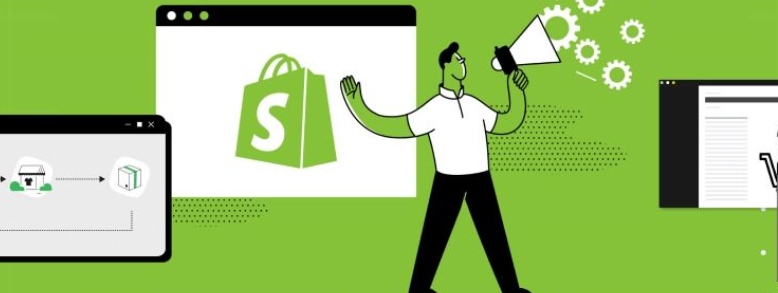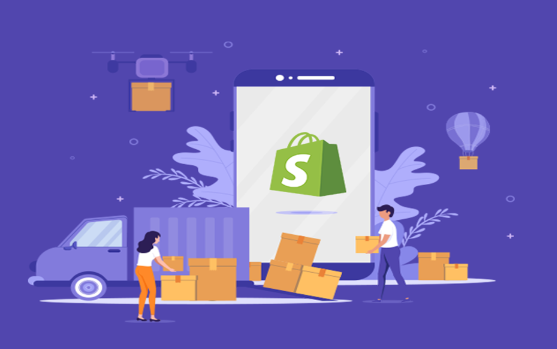Starting a dropshipping business can be an exciting venture, especially with platforms like Shopify that simplify the process. This guide will walk you through every step required to set up a successful Shopify dropshipping shop, from understanding the business model to launching your store and marketing your products.
Understanding Dropshipping
What is Dropshipping?
Dropshipping is a retail fulfillment method where a store does not keep the products it sells in stock. Instead, when you sell a product, you purchase the item from a third party and have it shipped directly to the customer. This means you never handle the product directly, allowing for lower overhead costs and reduced risk.
How Dropshipping Works:
- Customer Orders: A customer places an order on your online store.
- Order Forwarding: Your store automatically sends the order details to your dropshipping supplier.
- Supplier Fulfillment: The supplier packages and ships the product directly to the customer.
- Payment Processing: You receive payment from the customer before paying the supplier, ensuring cash flow.
Benefits of Dropshipping
- Low Startup Costs: No need for inventory or warehousing.
- Flexibility: Operate from anywhere with an internet connection.
- Wide Product Range: Access to a vast array of products without upfront investment.
- Scalability: Easily scale your business by adding new products or suppliers.

Choosing Your Niche
Selecting the right niche is crucial for success in dropshipping. Here’s how to choose effectively:
- Identify Interests: Start with what you are passionate about or interested in.
- Market Research: Use tools like Google Trends and social media to gauge interest in potential niches.
- Analyze Competition: Look at existing competitors in your chosen niche to understand market saturation and pricing strategies.
Setting Up Your Shopify Store
Step 1: Create Your Shopify Account
To begin, you'll need to create an account on Shopify:
- Visit the Shopify website and sign up for a free trial.
- Follow the onboarding instructions to set up your store's basic settings.
Step 2: Customize Your Store
- Choose a Theme: Select a visually appealing theme that aligns with your brand identity.
- Design Your Store: Customize colors, fonts, and layout using Shopify’s intuitive design tools.
- Add Essential Pages: Create pages like About Us, Contact Us, Privacy Policy, and Terms of Service.
Step 3: Set Up Payment and Shipping Options
- Navigate to the Settings section in your Shopify admin panel.
- Under Payments, set up how you will accept payments (credit cards, PayPal, etc.).
- Configure shipping settings based on your supplier’s capabilities and customer locations.
Finding Reliable Suppliers
Choosing the right suppliers is critical for maintaining quality and reliability. Here are some popular dropshipping apps to consider:
- DSers: Connects with AliExpress for easy product sourcing.
- Spocket: Focuses on suppliers from the US and Europe for faster shipping times.
- Zendrop: Offers a wide range of products with automated order processing.
Steps to Partner with Suppliers:
- Research Suppliers: Look for reviews and ratings of potential suppliers.
- Contact Suppliers: Reach out to discuss terms, shipping times, and product quality.
- Place Test Orders: Before committing, order samples to assess quality firsthand.
Adding Products to Your Store
Once you have selected your suppliers, it's time to add products:
- Use your dropshipping app to import products directly into your Shopify store.
- Write compelling product descriptions that highlight features and benefits.
- Set competitive prices while ensuring a healthy profit margin.

Marketing Your Dropshipping Business
Effective marketing strategies are essential for attracting customers:
Social Media Marketing
Utilize platforms like Instagram, Facebook, and TikTok:
- Create engaging content that showcases your products.
- Run targeted ads based on demographics and interests.
Email Marketing
Build an email list from day one:
- Use pop-ups on your site to encourage sign-ups.
- Send newsletters featuring promotions, new arrivals, and valuable content.
Search Engine Optimization (SEO)
Optimize your store for search engines:
- Use relevant keywords in product titles and descriptions.
- Create blog content related to your niche to drive organic traffic.
Managing Customer Service
Providing excellent customer service is vital for retention:
- Respond promptly to inquiries via email or chat support.
- Set clear expectations regarding shipping times and return policies.
- Use feedback to improve product offerings and customer experience.
Analyzing Performance Metrics
Regularly review key metrics to gauge business performance:
- Monitor sales data through Shopify's analytics dashboard.
- Track conversion rates, average order value, and customer lifetime value.
Scaling Your Business
As your dropshipping store grows, consider these strategies:
- Expand Product Lines: Add new categories or variations based on market demand.
- Explore New Markets: Consider international shipping options or targeting different demographics.
- Automate Processes: Use tools for inventory management, order fulfillment, and marketing automation.
Conclusion
Starting a Shopify dropshipping shop can be a rewarding endeavor if approached strategically. By understanding the dropshipping model, choosing the right niche, setting up an effective online store, finding reliable suppliers, marketing effectively, managing customer service well, analyzing performance metrics regularly, and scaling thoughtfully, you can build a successful online business that meets consumer needs while minimizing risks. Embarking on this journey requires dedication and continuous learning but offers immense potential for growth in today’s digital marketplace.


